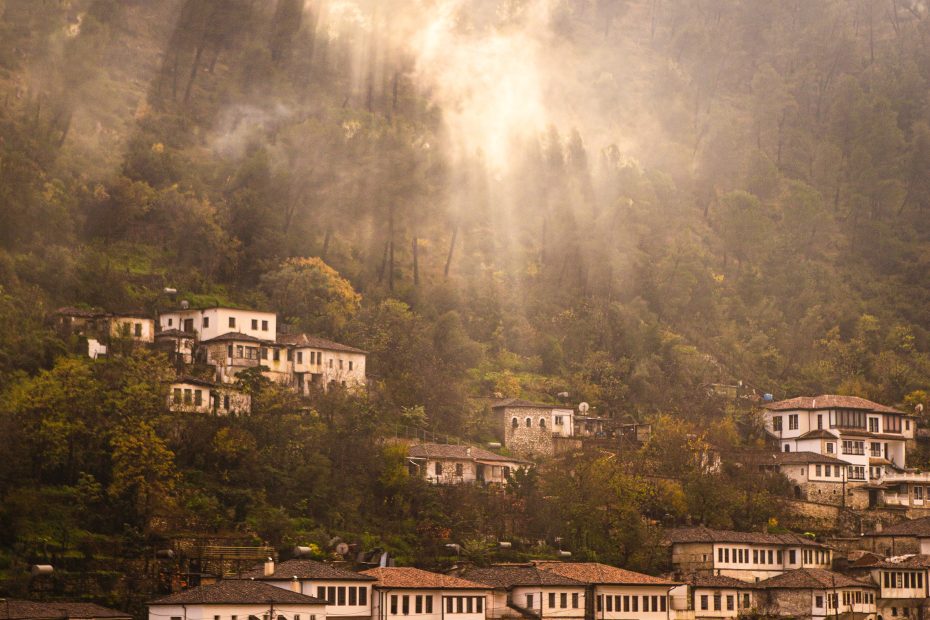Table of Contents
Introduction
With its iconic beaches and glitzy resort towns, Albania’s Albanian Riviera along the Ionian Sea has become a popular tourist destination. However, there is much more to discover along Albania’s picturesque Adriatic and Ionian coastlines beyond the bustling Riviera. From the rugged northern stretches to the undiscovered coves of the south, Albania’s lesser-visited coastal towns and natural areas offer travelers opportunities to experience the country’s rich culture, breathtaking landscapes, and warm hospitality.
Northern Coast
The northern Albanian coastline near Montenegro remains relatively untouristed. The Cape of Rodon, with its dramatic cliffs plunging into the sea, is considered one of Albania’s most scenic points. The historic town of Shëngjin provides a perfect base for exploring wild beaches and hiking trails. Further south, Lezha contains ancient ruins and serves as the burial site of 15th century national hero Skanderbeg.
Central Coast
Centrally located Durrës is Albania’s second largest city and an important port town. Its historic amphitheater dates back to the 2nd century BC. The lagoon town of Kavaja boasts beautiful murals and local mussel restaurants. Nearby, Divjakë-Karavasta National Park protects vital wetlands for migratory birds and features a pristine beach at the mouth of the Semani River.
Southern Coast
The Riviera gives way to more isolated beauty along the southern coastline. Archaeological remains can be found at Orikum and Butrint National Park. Charming mountain villages like Dhërmi and Himara offer lovely beaches without the crowds. Porto Palermo houses an intriguing 19th century castle in a picturesque bay setting.
Activities and Attractions
Beyond sunbathing, Albania’s lesser-visited coastal areas provide plenty of things to do. Outdoor adventurers can hike through pine forests to secluded beaches or sea caves along the numerous trails. The Ionian coast boasts some of the Mediterranean’s best scuba diving and snorkeling sites. Sampling the local seafood, wine, raki, and olive oil makes for memorable meals. History buffs will appreciate the ancient Ruins dotting the landscape.
Travel Tips
Many towns are accessible by public buses or minibuses. Durrës has an international airport. Renting a car provides the most flexibility. Accommodations run the gamut from campgrounds to hotels. Spring and fall offer pleasant weather without summer crowds.
No matter which part of the coast you choose to explore, Albania promises beautiful vistas paired with warm hospitality beyond the well-trodden Riviera.
Conclusion
With hundreds of miles of spectacular coastline, Albania offers intrepid travelers endless opportunities to discover breathtaking nature, rich history, and welcoming culture. Venturing beyond the main tourist stops of the Riviera unveils scenic stretches of untouched beauty and charming coastal towns frozen in time. From deserted beaches with turquoise waters to quaint mountain villages and ancient ruins, Albania’s lesser-known coastal treasures beckon to be explored.
FAQs
What are some top destinations along Albania’s northern coast?
Some top destinations on the northern coast include Cape Rodon, Shëngjin, and Lezha. This stretch of rugged, unspoiled coastline offers scenic overlooks, historic towns, and opportunities for hiking and exploring beaches.
What are the best places for water activities?
The central and southern Ionian coast near Himara boasts some of the clearest waters in the Mediterranean, making it ideal for swimming, snorkeling, scuba diving, and other water sports. Ksamil Islands also provide excellent snorkeling.
Where can I find ancient archaeological sites?
Ancient Greek and Roman ruins can be found throughout the coast, including Durrës, Butrint National Park, and Orikum. Apollonia to the interior of the coast features impressive archaeological remains.
What is the best way to get around the Albanian coast?
Buses connect most major coastal towns. Renting a car allows the most flexibility to visit smaller villages and discover hidden beaches. Tours and ferries are also available to some destinations.
When is the best time of year to visit the Albanian coast?
The best times are spring and fall when the weather is pleasant and crowds are smaller than summer. Late May-June and September-October tend to have ideal weather.
